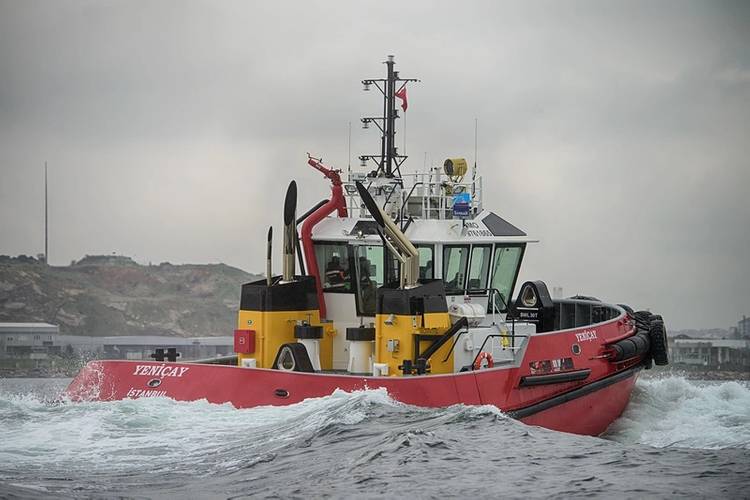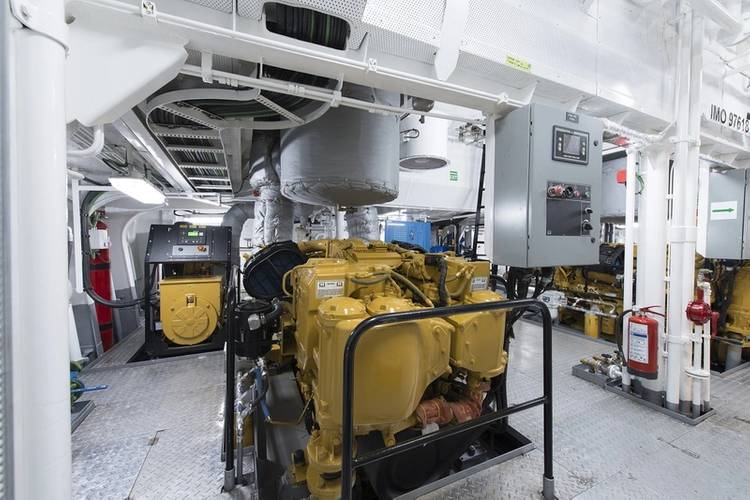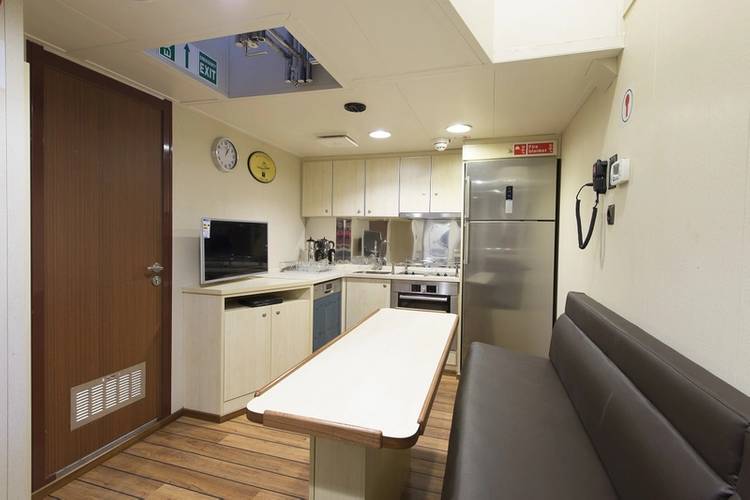The Yenicay 1 is the first of the new RAscal 1800 series of ASD tug designed by Robert Allan Ltd. and delivered by Sanmar to its own fleet in Turkey in January, 2015.
The RAscal 1800 is a big sister to the RAscal 1500 delivered by Sanmar in 2014 to Norwegian clients and shares a common hull form style, wheelhouse and general layout. According to the designer, both are built to high standards, almost yacht finish, and are fitted with Caterpillar engines and Veth Z-drives. However, the RAscal 1800 has considerably more power, speed and bollard pull. It is capable of ship assist work, line-handling, general harbor service and coastal towing. Ship assist work is generally done over the bow whereas general towing can be done over the bow with the winch or over the stern with either the winch or a towing hook.
Particulars of the Yenicay 1 are:
Length overall: 18.7 m
Beam, molded, extreme: 9.2 m
Depth, molded: 3.5 m
Maximum draft: 3.7 m
The tug was designed and constructed to ABS requirements with the notation:
ABS A1, Towing Vessel, AMS, UWILD, BP (30)
Major tank capacities are as follows:
Fuel Oil: 33,500 liters
Potable Water: 5,776 liters
Foam: 1,618 liters
On trials Yenicay 1 met or exceeded all performance expectations with a bollard pull of 31 metric tons and a free running speed of 12 knots.
Noise levels were 63 dbA in the wheelhouse, 60 dbA in the galley/mess and 60 dbA in the crew cabins, achieved by using the carefully engineered combination of resiliently mounted engines, light weight composite shafting, high attenuation silencers, resiliently mounted fans, visco-elastic floor treatment, and judicious use of sound insulation.
The vessel has been outfitted for a normal operating crew of four. Two cabins are located in the foc’sle, along with a galley, mess and WC with shower.
The deck machinery comprises an electric powered DMT TW-E 100 kN ship assist hawser winch on the bow and a tow hook aft. The tug can tow over the bow as well as over the stern with the single hawser winch. A hawser duct runs under the wheelhouse to facilitate this, and both the bow and stern are fitted with large stainless steel fairleads for the towline.
The wheelhouse is designed for maximum all-round visibility with the control station providing maximum visibility to both fore and aft deck working areas.
Main propulsion is comprised of a pair of Caterpillar C32 diesel engines, each rated 970 kW at 1,800 rpm, and each driving a Veth VZ-900 fixed pitch Z-drive unit in ASD configuration. Propellers are five-bladed 1,700 mm Kaplan type in nozzles.
The electrical power is provided by two Caterpillar C4.4 diesel generators, each with an output of 86 ekW.
Ship-handling fenders at the bow consist of a single 500 x 250 cylindrical fender at the main deck lever, with 300 mm W fenders between the main deck and the knuckle. A 300 x 300 hollow “D” fender provides protection at the main and foc'sle deck sheer lines and around the stern.
A second RAscal 1800 is nearing completion at Sanmar in March 2015. Both tugs will operate in the Sanmar’s harbor fleet for ship berthing operations in Petkim Port, Nemrut Bay, Turkey. Sanmar is also working on a high powered version of the same RAscal 1800 with bigger Caterpillar 3512 engines which will give an increased bollard pull of 40 metric tons.



















